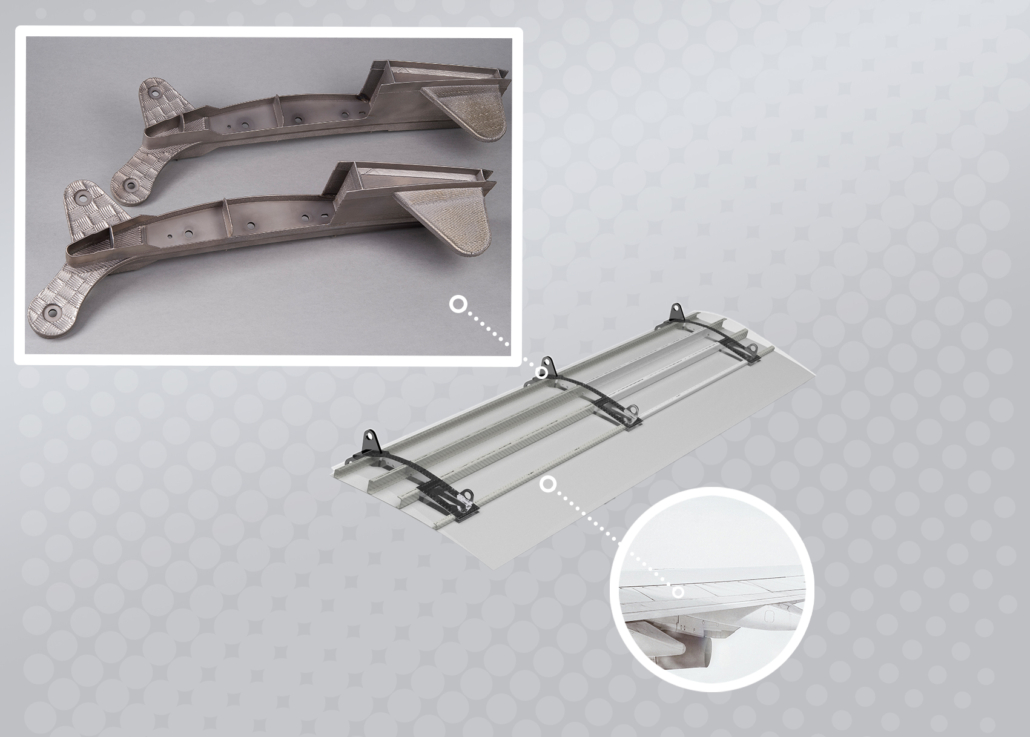MovAbles for Next generaTion Aircraft (MANTA)
The Challenge
The objective was to manufacture three Ti-6Al-4V flaperon ribs by Direct Energy Deposition (DED). With conventional manufacturing processes, it can be very costly or even impossible to produce components with such complex shapes. However, DED is also challenging due to various features inherent in the design: bulky thin parts, asymmetric geometry, overhanging features etc. The main challenge was manufacturing all the structures with the minimum distortion and highest accuracy.
The Solution
Three full-scale Ti-6Al-4V ribs were successfully produced by laser powder DED. To reduce the baseplate distortions, a symmetrical build-up was chosen. This strategy helped minimise substrate deformations. For the 15 mm lugs, checkboard deposition with an outside-in strategy was chosen to avoid distortions. In addition, a horizontal plate was welded with DED to create an offset shear web. Thanks to DED, manufacturing the ribs by DED reduced the buy-to-fly ratio from 40 (starting from a titanium block) to 3.
What did we do?
First, all the characteristic features of the flaperon rib were identified. An experimental design was then produced to evaluate and optimise the production of those features. All the critical structures such as the overthickness, wall-intersection overlaps or horizontal web welding were therefore optimised before manufacturing the ribs. The design guidelines for critical features for Ti-6Al-4V were developed through this work.
Contact
Maria Montero
maria.montero@nlr.nl
+31 88 5114683
Project partners
Asco, Royal NLR, DLR, TU Delft, Fokker Technologies Holding


